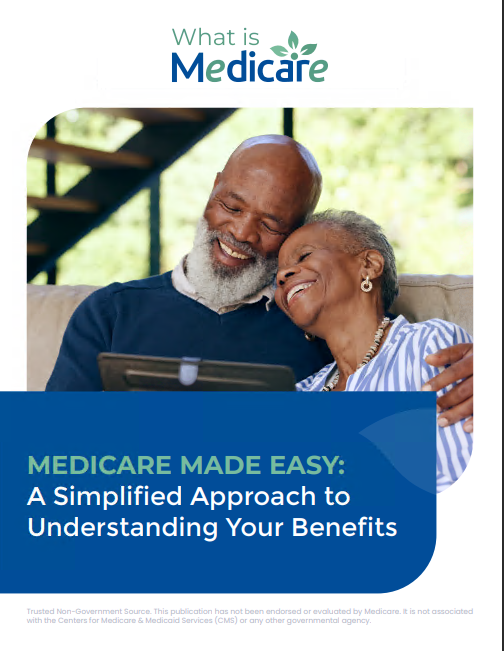Key Takeaways:
- Big changes are coming to Medicare in 2025, including caps on out-of-pocket costs and adjusted premiums, making it vital to review your coverage options during this Open Enrollment Period.
- Timing is everything during Medicare enrollment. Mark your calendar for key dates like October 15 to December 7 for the Open Enrollment Period and January 1 to March 31 for the Medicare Advantage Open Enrollment Period.
The Importance of Medicare Enrollment
Medicare’s annual Open Enrollment Period (OEP) is in full swing, and if you’re like most people, you’ve probably heard a lot about it lately. Whether you’re turning 65 soon or you’re already on Medicare, this time of year is crucial for reviewing your plan options and making decisions for 2025. This year, things are heating up because some significant changes are coming next year, and I’m here to break it all down for you.
If you haven’t already circled the dates, the Medicare OEP runs from October 15 to December 7 each year. That’s the window when you can make changes to your Medicare plan, whether it’s switching between Original Medicare and Medicare Advantage, changing prescription drug plans, or simply reviewing what you have to make sure it still meets your needs. The changes you make during this period will take effect on January 1, 2025. Let’s dive into why this year’s enrollment season is catching everyone’s attention.
Why You Should Care About the 2025 Changes
You might be wondering, “What’s the big deal this time?” Well, 2025 is going to introduce a few new things that are aimed at making Medicare easier to navigate and more affordable. Here are a few key highlights:
-
Out-of-Pocket Drug Cost Cap: For 2025, Medicare Part D is introducing a cap on out-of-pocket costs for prescription drugs. This cap is set at $2,000, meaning that once you hit that amount in a year, you won’t have to pay more for your medications. This change is huge, especially for those on expensive medications. No more endless co-pays or worrying about hitting the dreaded “donut hole.”
-
Spreading Out Prescription Costs: Another major update is the new payment option that allows you to spread the cost of your prescriptions over the year. Instead of paying huge amounts upfront when you hit the deductible, you can now spread those costs into more manageable payments, giving you a better handle on your monthly budget.
-
Adjustments to Premiums and Deductibles: As with every year, there will be adjustments to the premiums and deductibles for both Medicare Part A and Part B. It’s always important to keep an eye on these changes to make sure they fit your financial situation. Even if you’re happy with your current coverage, the numbers can shift, and so can your monthly budget.
How the Enrollment Periods Work
Navigating the different enrollment periods can get a little confusing, but understanding them is key to ensuring you don’t miss out on making the best decisions for your Medicare coverage. Let’s break down the different timelines you need to keep track of.
Open Enrollment Period (OEP)
The Open Enrollment Period (OEP) is the main one you need to focus on right now. It happens every year from October 15 to December 7. This is the time to:
- Switch from Original Medicare to Medicare Advantage (or vice versa).
- Change your Part D prescription drug plan.
- Add or drop coverage depending on your needs.
The changes you make during this period will take effect on January 1, 2025. This is the time to really review your plan details, especially in light of the 2025 changes coming to Medicare. If you’re already on Medicare, you’ll likely receive a notice called the Annual Notice of Change (ANOC). This document will give you the lowdown on any changes to your current plan for the coming year.
Medicare Advantage Open Enrollment Period (MA OEP)
If you’re already enrolled in a Medicare Advantage plan and want to make changes, the Medicare Advantage Open Enrollment Period happens every year from January 1 to March 31. During this time, you can switch to another Medicare Advantage plan or drop it and return to Original Medicare. However, you can’t switch from Original Medicare to Medicare Advantage during this window—that’s only possible during the regular OEP.
General Enrollment Period (GEP)
Missed your Initial Enrollment Period when you first became eligible? Don’t worry, the General Enrollment Period (GEP) allows you to sign up for Medicare Part A and/or Part B between January 1 and March 31 every year. Keep in mind that if you enroll during this time, your coverage will start on July 1, and you may face a late enrollment penalty.
Special Enrollment Period (SEP)
Certain life events, like losing employer coverage or moving out of your plan’s service area, may qualify you for a Special Enrollment Period (SEP). This gives you the flexibility to make changes to your Medicare coverage outside of the standard enrollment windows. The timing for SEP varies depending on the specific life event, so it’s important to check if you qualify.
Making Sense of Your Options
Choosing the right Medicare plan can feel overwhelming, especially with all the different parts—A, B, C, D—and enrollment periods to keep track of. But here’s where you can take a breath and simplify things.
When you’re comparing plans, think about your healthcare needs and your financial situation. Some things to consider:
- How often do you visit the doctor? If you have frequent visits, a plan with lower co-pays might be beneficial.
- Do you take prescription medications? The Part D drug plan you choose should cover your meds at a reasonable price.
- Are you comfortable with a network of providers? Medicare Advantage plans typically have networks, so make sure your preferred doctors are in-network.
It’s also worth considering your long-term health needs. Medicare is not a one-size-fits-all program. What works for you this year might not work next year, so staying on top of plan changes—especially with the big shifts happening in 2025—is crucial.
Helpful Tips for a Smooth Enrollment
As we’re heading toward the final weeks of the OEP, it’s a good idea to take a few steps now to ensure a smooth process:
-
Review Your Current Plan: Look over your Annual Notice of Change to understand how your current plan will change in 2025. Are the premium or co-pay amounts going up? Will your prescriptions still be covered?
-
Compare New Plans: Even if you think your current plan is working for you, it’s always smart to see what else is available. You might find a plan with better coverage or lower costs.
-
Don’t Wait Until the Last Minute: With so many options to consider, give yourself plenty of time to compare plans and make a decision before December 7.
-
Get Help If You Need It: If the process feels overwhelming, you’re not alone. Many resources are available, from Medicare’s official website to local counseling services, to help you navigate your options.
Medicare 2025: A New Year, New Changes
The upcoming changes in 2025 have everyone talking. With caps on out-of-pocket prescription costs and more flexibility in managing payments, Medicare is taking steps to be more user-friendly. But as always, you need to be proactive in understanding how these changes affect your individual situation. Take advantage of the Open Enrollment Period to review your plan, compare your options, and make sure you’re getting the best possible coverage for the coming year.









